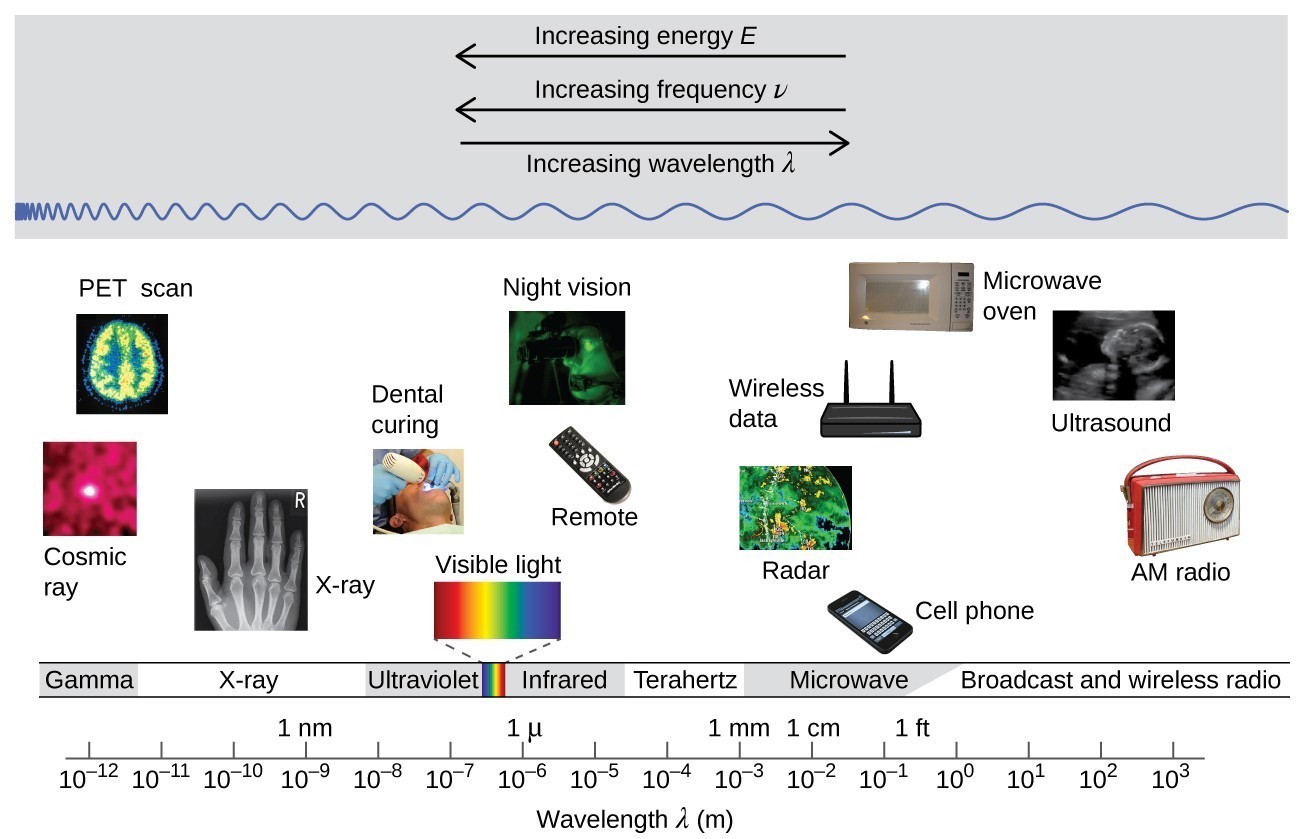7 Ways to Master Waves and the Electromagnetic Spectrum

Understanding the Electromagnetic Spectrum
The electromagnetic spectrum is a vast range of frequencies that include various types of electromagnetic radiation, from low-frequency, long-wavelength waves to high-frequency, short-wavelength waves. This spectrum includes everything from radio waves and microwaves to infrared light, visible light, ultraviolet light, X-rays, and gamma rays. Each type of wave has unique properties and applications, and mastering the electromagnetic spectrum can reveal the intricacies of the physical world.
1. Explore the Electromagnetic Spectrum
To begin mastering waves and the electromagnetic spectrum, it’s essential to understand the different types of waves and their frequencies. The electromagnetic spectrum can be divided into several regions, each corresponding to a specific range of frequencies. Here’s a brief overview of the main regions:
- Radio waves: Long-wavelength waves used for communication, navigation, and broadcasting.
- Microwaves: Medium-wavelength waves used for heating, cooking, and wireless communication.
- Infrared light: Short-wavelength waves that are felt as heat and used for thermal imaging.
- Visible light: The only part of the spectrum visible to the human eye, consisting of the colors of the rainbow.
- Ultraviolet light: Short-wavelength waves that can cause chemical reactions and are used in disinfection and curing.
- X-rays: High-energy waves used in medical imaging and materials analysis.
- Gamma rays: The highest-energy waves, used in medical treatment, scientific research, and industrial applications.
🔍 Note: The electromagnetic spectrum is not limited to these regions, and there may be some overlap between them.
2. Learn About Wave Properties
Understanding wave properties is crucial to mastering the electromagnetic spectrum. Here are some key properties to focus on:
- Frequency: The number of oscillations or cycles per second, measured in Hertz (Hz).
- Wavelength: The distance between two consecutive peaks or troughs, measured in meters (m).
- Speed: The speed at which a wave propagates, which is constant in a vacuum (approximately 299,792,458 meters per second).
- Amplitude: The maximum displacement or intensity of a wave.
- Polarization: The orientation of a wave’s electric field vector.
3. Study Wave Interactions
Waves interact with matter in various ways, and understanding these interactions is essential for mastering the electromagnetic spectrum. Here are some key interactions to study:
- Reflection: The change in direction of a wave when it bounces off a surface.
- Refraction: The bending of a wave as it passes from one medium to another.
- Diffraction: The bending of a wave around an obstacle or through a narrow opening.
- Interference: The combination of two or more waves to form a new wave pattern.
4. Delve into Electromagnetic Wave Applications
Electromagnetic waves have numerous applications in various fields, including:
- Communication: Radio waves, microwaves, and infrared light are used in wireless communication, broadcasting, and navigation.
- Medicine: X-rays, gamma rays, and infrared light are used in medical imaging, treatment, and diagnosis.
- Industry: Microwaves, infrared light, and ultraviolet light are used in heating, curing, and surface treatment.
- Scientific Research: Electromagnetic waves are used in spectroscopy, interferometry, and particle physics.
5. Experiment with Electromagnetic Waves
Hands-on experimentation is an excellent way to master the electromagnetic spectrum. Here are some ideas for experiments:
- Build a radio transmitter: Use a simple circuit to transmit radio waves and detect them using a receiver.
- Demonstrate refraction: Use a prism or a glass of water to demonstrate the bending of light.
- Create a DIY spectrometer: Use a cardboard box, a prism, and a lens to create a simple spectrometer.
6. Use Online Resources and Simulations
There are many online resources and simulations available to help you master the electromagnetic spectrum. Here are a few examples:
- PhET Interactive Simulations: The University of Colorado Boulder’s PhET simulations offer interactive models of various electromagnetic phenomena.
- NASA’s Electromagnetic Spectrum: NASA’s website provides an interactive tutorial on the electromagnetic spectrum.
- Khan Academy’s Electromagnetic Waves: Khan Academy’s video lectures cover the basics of electromagnetic waves and the electromagnetic spectrum.
7. Join Online Communities and Forums
Joining online communities and forums is an excellent way to connect with others who share your interest in the electromagnetic spectrum. Here are a few examples:
- Reddit’s r/Physics: A community of physics enthusiasts discussing various topics, including the electromagnetic spectrum.
- Stack Exchange’s Physics: A Q&A forum for physics-related questions, including those about the electromagnetic spectrum.
- Electromagnetic Spectrum subreddit: A community dedicated to discussing the electromagnetic spectrum and its applications.
By following these seven steps, you’ll be well on your way to mastering waves and the electromagnetic spectrum.
After mastering the electromagnetic spectrum, you’ll gain a deeper understanding of the world around you and the many applications of electromagnetic waves.
What is the electromagnetic spectrum?
+The electromagnetic spectrum is a range of frequencies that include various types of electromagnetic radiation, from low-frequency, long-wavelength waves to high-frequency, short-wavelength waves.
What are the main regions of the electromagnetic spectrum?
+The main regions of the electromagnetic spectrum are radio waves, microwaves, infrared light, visible light, ultraviolet light, X-rays, and gamma rays.
What are some applications of electromagnetic waves?
+Electromagnetic waves have numerous applications in various fields, including communication, medicine, industry, and scientific research.
Related Terms:
- Electromagnetic spectrum Worksheet pdf
- Aaron Clark
- Dovydas Butka
- Jaxon Olvera
- Stevie Prudholme
- Alex Leiba



